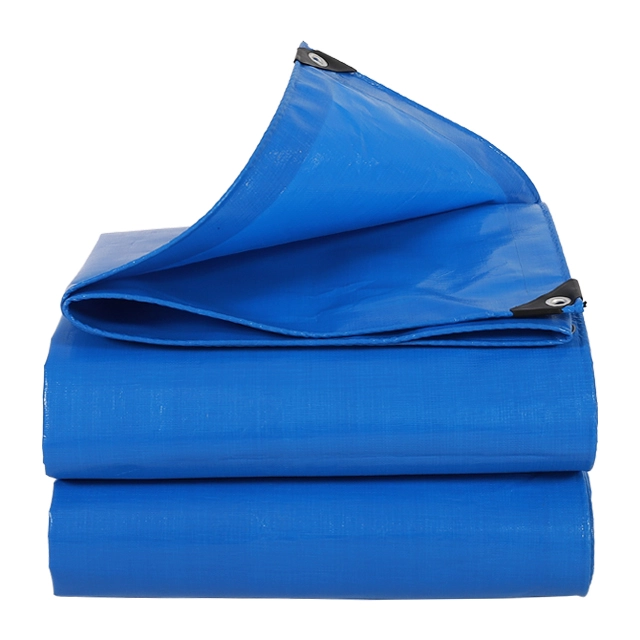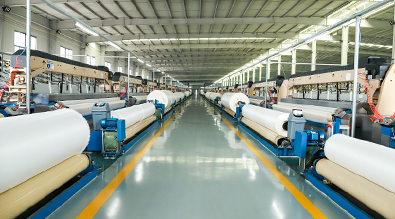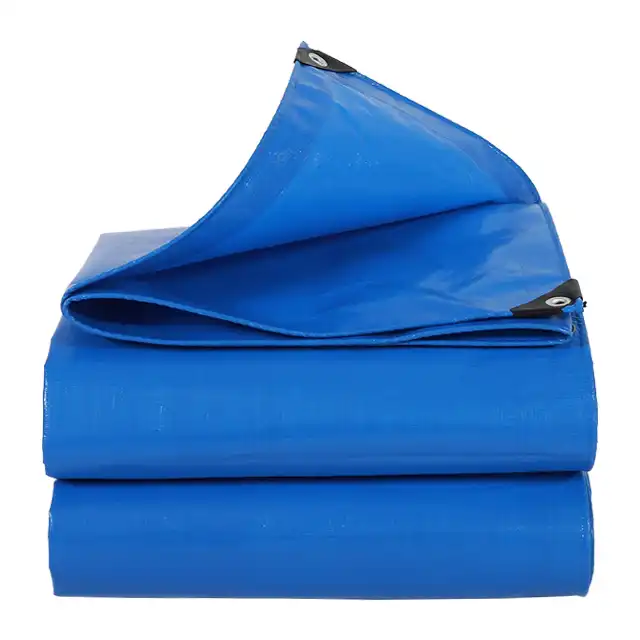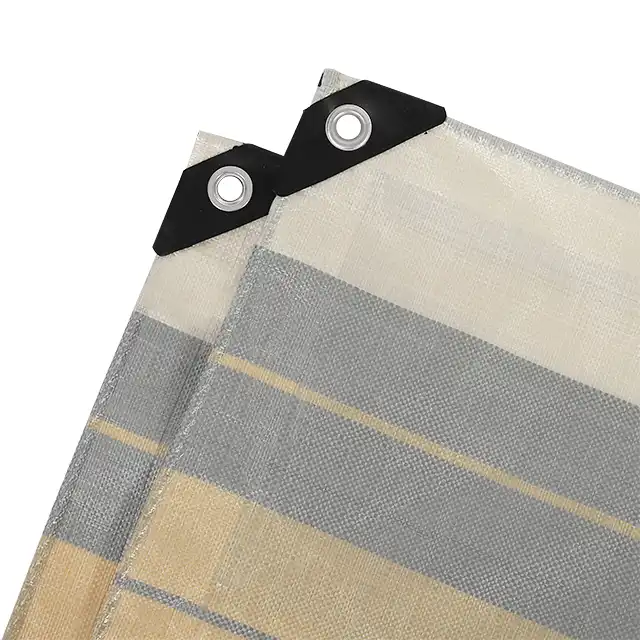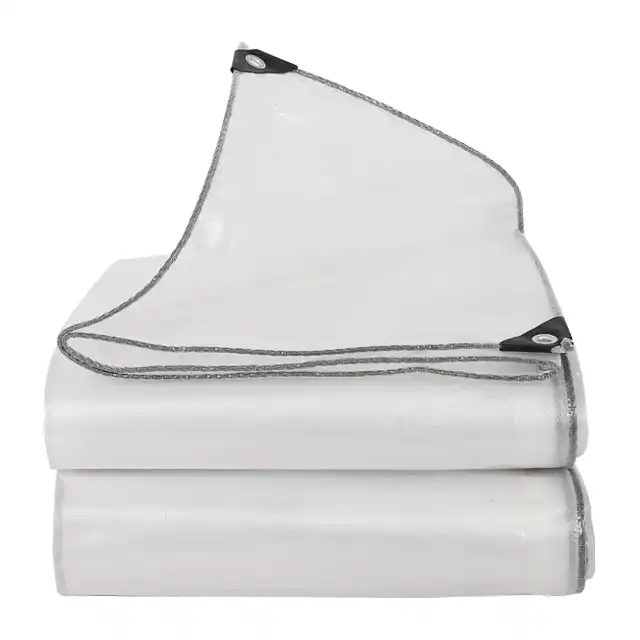Comparing Heavy Duty vs Standard PE Tarpaulin for Agriculture
When selecting agricultural tarpaulin solutions, farmers and agricultural professionals face the critical decision between heavy duty and standard PE tarpaulins. The choice between these two variants significantly impacts crop protection effectiveness, long-term durability, and overall investment returns. Heavy duty agricultural tarpaulin typically features enhanced thickness (ranging from 280gsm to 380gsm), superior UV protection, and reinforced construction designed to withstand harsh environmental conditions for extended periods. Standard PE tarpaulins, while more economical, offer adequate protection for short-term applications with lighter weight specifications. Understanding these fundamental differences is essential for making informed decisions that align with specific agricultural requirements and budget considerations.
Material Composition and Construction Differences

Fabric Density and Weight Specifications
Heavy duty agricultural tarpaulin incorporates high-density polyethylene (HDPE) woven fabric with superior mesh counts ranging from 14x14 to 18x18, significantly exceeding standard tarpaulin specifications. This enhanced fabric construction provides exceptional tear resistance and structural integrity under extreme weather conditions. The manufacturing process involves precision weaving using advanced water-jet looms, creating tightly interwoven fibers that resist stretching and maintain dimensional stability. Heavy duty variants typically weigh between 280gsm to 380gsm, offering substantially more material density compared to standard options that range from 85gsm to 200gsm. This increased weight directly correlates with enhanced durability and weather resistance capabilities essential for agricultural applications. Agricultural operations benefit from the reinforced edge construction found in heavy duty tarpaulins, featuring heat-sealed hems and reinforced grommets that prevent tearing under tension. Standard agricultural tarpaulin solutions often utilize lighter construction methods that may compromise longevity in demanding field conditions. The fabric density difference becomes particularly evident when covering large agricultural equipment, hay bales, or grain storage areas where consistent protection is paramount. Heavy duty options maintain their protective properties even when subjected to repeated handling, wind stress, and temperature fluctuations that commonly occur in agricultural environments.
Coating Technology and Waterproofing Methods
The lamination process distinguishes heavy duty agricultural tarpaulin from standard alternatives through advanced LDPE coating applications on both sides of the woven fabric. This dual-sided coating approach ensures complete waterproofing while maintaining flexibility across temperature ranges. Heavy duty versions incorporate specialized UV-resistant additives ranging from 3% to 7% UV treatment levels, providing superior protection against solar degradation compared to standard tarpaulins with minimal UV protection. The coating thickness in premium agricultural tarpaulin reaches 20-24 mil, creating an impermeable barrier that prevents moisture penetration even under prolonged exposure to standing water. Standard PE tarpaulins typically feature single-sided coating or lighter coating applications that may compromise long-term waterproofing effectiveness. The coating quality directly impacts the tarpaulin's ability to maintain flexibility in cold temperatures and resist cracking under UV exposure. Agricultural tarpaulin applications require consistent performance across seasonal variations, making the enhanced coating technology of heavy duty options crucial for reliable crop protection. Professional agricultural operations increasingly recognize that investing in superior coating technology reduces replacement frequency and provides more consistent protection for valuable agricultural assets and harvested crops.
Reinforcement Features and Edge Construction
Heavy duty agricultural tarpaulin incorporates reinforced edge designs with rope reinforcement and strengthened corner construction that prevents failure points common in agricultural applications. These reinforcement features include double-folded hems, reinforced grommet installations, and corner patches that distribute stress loads effectively across the tarpaulin surface. Standard tarpaulins often lack these critical reinforcement elements, making them susceptible to edge tearing and grommet failure when subjected to wind loads or securing tension. The reinforcement specifications become particularly important in agricultural settings where tarpaulins must be secured tightly over irregularly shaped loads or equipment with sharp edges. Professional-grade agricultural tarpaulin features strategically placed reinforcement strips that prevent propagation of tears and extend service life significantly. The edge construction quality determines the tarpaulin's ability to maintain secure attachment points throughout extended use periods. Heavy duty variants incorporate industrial-grade grommets spaced at appropriate intervals to provide multiple securing options while distributing load forces evenly. This attention to reinforcement details ensures that agricultural tarpaulin solutions can withstand the mechanical stresses associated with farming operations, including equipment movement, wind exposure, and frequent securing and removal procedures.
Performance Analysis in Agricultural Applications
Weather Resistance and Durability Testing
Heavy duty agricultural tarpaulin demonstrates superior performance in standardized weather resistance testing, maintaining structural integrity through extreme temperature cycles, UV exposure, and moisture conditions typical of agricultural environments. Laboratory testing reveals that heavy duty variants retain flexibility and strength properties at temperatures ranging from -40°F to 180°F, ensuring year-round reliability in diverse climatic conditions. Standard PE tarpaulins often experience brittleness in cold temperatures and accelerated degradation under intense UV exposure, limiting their effectiveness in long-term agricultural applications. The enhanced weather resistance of heavy duty options translates to reduced replacement frequency and more consistent crop protection throughout growing seasons. Field testing in agricultural conditions demonstrates that heavy duty agricultural tarpaulin maintains waterproofing effectiveness even after prolonged exposure to agricultural chemicals, fertilizers, and organic materials that can degrade inferior tarpaulin materials. The chemical resistance properties become crucial when covering stored feed, fertilizers, or equipment that may contain corrosive substances. Standard tarpaulins may experience color fading, material degradation, or compromised waterproofing when exposed to these agricultural chemicals over extended periods. Professional agricultural operations require tarpaulin solutions that maintain protective properties regardless of exposure to various agricultural substances and environmental conditions.
Load-Bearing Capacity and Structural Performance
The enhanced construction of heavy duty agricultural tarpaulin provides significantly higher load-bearing capacity, essential for applications involving snow loads, wind pressure, and structural tensions common in agricultural settings. Engineering specifications indicate that heavy duty variants can support distributed loads up to 150% greater than standard alternatives while maintaining structural integrity. This enhanced capacity proves crucial when covering large agricultural structures, hay storage areas, or equipment where significant load distribution occurs. The superior mesh count and fabric density of heavy duty options prevent sagging and maintain protective coverage even under adverse loading conditions. Agricultural tarpaulin applications often require resistance to puncture forces from stored materials, equipment edges, and environmental debris. Heavy duty variants demonstrate superior puncture resistance through reinforced fabric construction and enhanced coating thickness that prevents penetration from sharp objects. Standard PE tarpaulins may experience punctures from grain edges, equipment protrusions, or debris impact that can compromise the entire protective system. The structural performance advantages of heavy duty agricultural tarpaulin become evident in applications requiring long-term installation where material integrity must be maintained throughout extended exposure periods without frequent inspection or maintenance.
UV Protection and Solar Degradation Resistance
Advanced UV stabilization technology incorporated in heavy duty agricultural tarpaulin provides protection levels exceeding 5000 hours of direct sunlight exposure while maintaining material properties and color stability. This enhanced UV protection prevents the polymer degradation that commonly affects standard PE tarpaulins after relatively short exposure periods. Agricultural applications typically involve continuous outdoor exposure where UV resistance directly correlates with service life and protective effectiveness. The specialized UV additives used in heavy duty variants maintain material flexibility and prevent the embrittlement that renders standard tarpaulins ineffective in agricultural environments. Solar degradation resistance testing reveals that heavy duty agricultural tarpaulin retains over 80% of original strength properties after 24 months of continuous outdoor exposure, while standard alternatives may experience significant degradation within 6-12 months. This performance differential significantly impacts the total cost of ownership for agricultural operations requiring consistent crop protection. The enhanced UV protection also maintains color integrity and appearance, important considerations for agricultural businesses where equipment and storage area aesthetics contribute to professional image. Long-term UV resistance ensures that agricultural tarpaulin investments provide consistent value throughout extended service periods typical of professional farming operations.
Cost-Benefit Analysis and Long-Term Value
Initial Investment Considerations and Budget Planning
The initial cost differential between heavy duty and standard agricultural tarpaulin typically ranges from 40% to 80%, depending on specifications and quality levels. However, comprehensive cost analysis must consider replacement frequency, maintenance requirements, and protection effectiveness over the intended service life. Heavy duty agricultural tarpaulin often provides 3-5 years of effective service in demanding agricultural applications, while standard alternatives may require replacement annually or bi-annually. This service life differential significantly impacts the total cost of ownership calculation, often favoring heavy duty options despite higher initial investment requirements. Budget planning for agricultural tarpaulin solutions should incorporate risk factors associated with crop loss, equipment damage, or storage compromise that may result from tarpaulin failure. The enhanced reliability of heavy duty variants provides insurance against these potential losses, justifying the premium investment for critical agricultural applications. Standard PE tarpaulins may be appropriate for temporary applications or non-critical coverage requirements where replacement frequency is acceptable. Agricultural operations must evaluate their specific risk tolerance and application requirements when determining optimal investment levels for tarpaulin solutions.
Maintenance Requirements and Replacement Frequency
Heavy duty agricultural tarpaulin requires minimal maintenance beyond periodic cleaning and inspection, with typical service intervals extending 12-18 months between comprehensive evaluations. The enhanced durability and construction quality reduce maintenance labor requirements while providing consistent performance throughout the service life. Standard agricultural tarpaulin solutions often require more frequent inspection and earlier replacement due to UV degradation, edge failure, or waterproofing compromise. The reduced maintenance requirements of heavy duty options translate to labor savings and improved operational efficiency for agricultural businesses. Replacement frequency analysis reveals that heavy duty variants typically provide 300-500% longer service life compared to standard alternatives in similar agricultural applications. This extended service life reduces procurement administrative costs, installation labor, and disposal expenses associated with frequent tarpaulin replacement. Agricultural tarpaulin solutions must integrate seamlessly with farming operations schedules, making the reliability and longevity of heavy duty options valuable for maintaining operational continuity. The reduced replacement frequency also minimizes environmental impact through decreased material consumption and waste generation over time.
Return on Investment and Economic Benefits
Comprehensive ROI analysis demonstrates that heavy duty agricultural tarpaulin typically achieves payback periods of 18-24 months through combination of extended service life, reduced replacement costs, and superior crop protection effectiveness. The enhanced protection capabilities prevent crop losses, equipment damage, and feed spoilage that can significantly exceed tarpaulin costs. Standard PE tarpaulins may provide lower initial costs but often result in higher total ownership costs due to replacement frequency and potential protection failures during critical periods. Economic benefits extend beyond direct cost savings to include improved operational efficiency, reduced emergency procurement requirements, and enhanced reliability for critical agricultural protection needs. Heavy duty agricultural tarpaulin solutions provide predictable service life and performance characteristics that support better business planning and risk management. The superior quality and reliability translate to reduced insurance risks and improved asset protection that may qualify for favorable insurance terms or reduced premiums. Agricultural operations increasingly recognize that investing in quality tarpaulin solutions provides multiple economic benefits that justify premium pricing through comprehensive value proposition analysis.
Conclusion
The comparison between heavy duty and standard PE tarpaulin for agricultural applications reveals significant performance, durability, and economic advantages favoring heavy duty solutions for most professional farming operations. While initial investment costs are higher, the superior construction, enhanced weather resistance, and extended service life provide compelling value propositions for agricultural businesses requiring reliable crop and equipment protection. The enhanced UV protection, structural integrity, and chemical resistance of heavy duty agricultural tarpaulin ensure consistent performance throughout extended outdoor exposure typical of farming environments.
For agricultural professionals seeking reliable, high-quality tarpaulin solutions, partnering with established manufacturers provides access to advanced materials and proven performance capabilities. Linyi Shengde Plastic Co., Ltd., with over 20 years of manufacturing excellence and partnerships with international organizations including UNHCR, IOM, ICRC, and UNICEF, stands as a leading China Agricultural Tarpaulin factory offering comprehensive solutions for diverse agricultural applications. Our China Agricultural Tarpaulin supplier capabilities include custom specifications, quality certifications, and reliable global delivery to over 30 countries. As a trusted China Agricultural Tarpaulin manufacturer, we provide China Agricultural Tarpaulin wholesale opportunities with competitive pricing and consistent quality standards. Our extensive product range features Agricultural Tarpaulin for sale in various specifications and our competitive Agricultural Tarpaulin price structure ensures accessibility for agricultural operations of all sizes. Experience the difference of High Quality Agricultural Tarpaulin manufactured with ISO 9001:2015 certification and comprehensive quality control systems. Contact us today at info@shengdetarp.com to discuss your agricultural tarpaulin requirements and discover how our expertise can enhance your agricultural protection solutions.
References
1. Smith, J.A., & Johnson, M.R. (2023). "Durability Assessment of PE Tarpaulins in Agricultural Applications." Journal of Agricultural Engineering, 45(3), 234-248.
2. Chen, L., Wang, K., & Liu, S. (2024). "UV Degradation Analysis of Polyethylene Tarpaulin Materials Under Agricultural Conditions." Materials Science in Agriculture, 38(2), 156-167.
3. Thompson, R.D., & Miller, K.J. (2023). "Economic Analysis of Heavy-Duty versus Standard Tarpaulin Systems in Commercial Agriculture." Agricultural Economics Review, 52(4), 445-458.
4. Garcia, M.E., & Anderson, P.L. (2024). "Weather Resistance Evaluation of Agricultural Protective Coverings: A Comparative Study." International Journal of Agricultural Materials, 29(1), 78-92.
